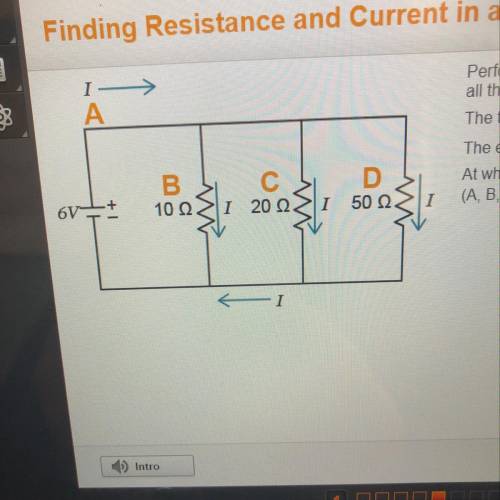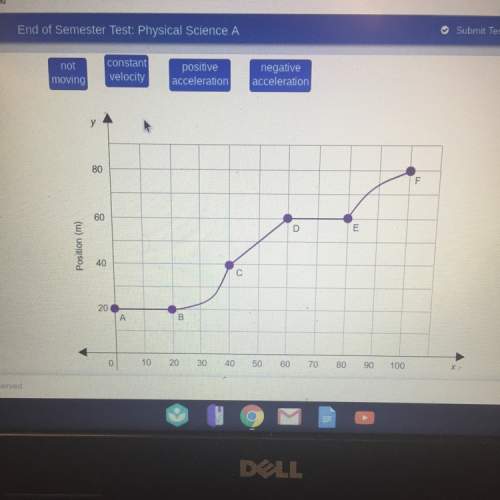Perform calculations using the circuit illustrated. Round
all the numerical answers to the ten...

Physics, 07.04.2020 01:39 raulramirez01
Perform calculations using the circuit illustrated. Round
all the numerical answers to the tenths place.
The total resistance in the circuit is .
The expected current at point A is A.
At what point in the circuit will the current be the lowest
(A, B, C, or D)?


Answers: 2


Another question on Physics

Physics, 22.06.2019 09:00
What changes occur in the brain during the teenage years? 25 points, someone me out!a.) thinking becomes slower as the brain grows larger. b.) connections between neurons become stronger and faster. c.) unused neurons fuse together to form larger, better functioning neurons. d.) more neurons are developed.
Answers: 2

Physics, 22.06.2019 14:20
Antireflective coatings on solar cells are often made by applying a thin film of silicon nitride (sinx), which has an index of refractive of 1.2, on the top of the silicon solar cell, which has a refractive index of about 3.5. however, the sun emits radiation of various wavelengths which the solar cell absorbs, and the antireflective coating can only absolutely minimize the reflection of one of these wavelengths. the coating thickness is chosen to reduce the reflection of green/yellow light (e = 2.2 ev), which is the most intense color in the solar spectrum (shown below). which of the following coatings would minimize reflection of green/yellow light? the answer is 820 nm how? what is the angular width of the central maximum of an electron traveling at 2 x 108 m/s going through a single slit of width 1 mm.
Answers: 1

Physics, 22.06.2019 22:00
Will mark brainliest! asap! ! 16) which of the clouds shown would indicate a possible future rain storm? a) b) c) d)
Answers: 1

Physics, 23.06.2019 01:30
Sally turns on her cellular telephone to speak to her friend who is located thousands of miles away. which of the following best describes how such a telephone is able to transmit and receive information? a. the cellular telephone transmits, receives, and encodes information using only sound waves. b. the cellular telephone transmits, receives, and encodes information using only electromagnetic waves. c. the cellular telephone transmits information by electromagnetic waves to a receiver which then encodes them and produces sound. d. the cellular telephone transmits information by sound waves to a receiver which then encodes them and produces electromagnetic waves.
Answers: 2
You know the right answer?
Questions


Mathematics, 27.10.2019 12:43

History, 27.10.2019 12:43



History, 27.10.2019 12:43

Social Studies, 27.10.2019 12:43

History, 27.10.2019 12:43


Spanish, 27.10.2019 12:43


Mathematics, 27.10.2019 12:43

Mathematics, 27.10.2019 12:43

Mathematics, 27.10.2019 12:43


English, 27.10.2019 12:43

Mathematics, 27.10.2019 12:43







